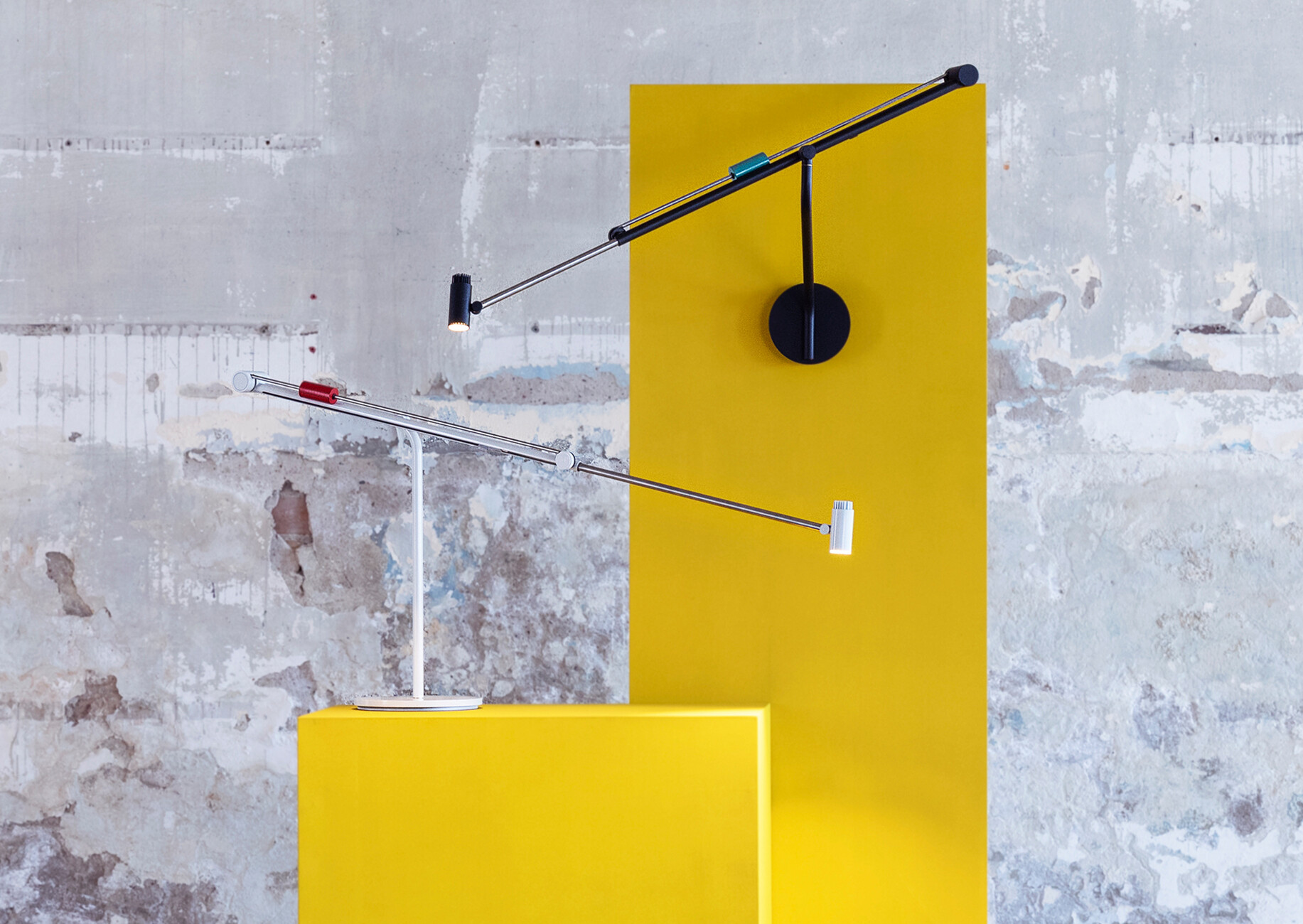YOUNG TALENTS
Alternators
Nina C. Müller: You studied art and design. How did you come to specialise in luminaires?
Simon Schmitz: For me, lighting represents a particularly informal area in interior design. Lighting can function as a silent servant or become the centrepiece of the room. They have many different dimensions that you don't find in a chair, for example. You can design them purely functionally or with a lot of artistic freedom. In my work, these two directions go hand in hand. The one conditions the other.
What particularly fascinates you?
Simon Schmitz: A common factor in my portfolio is mechanics. Since my studies, I have been experimenting with functional principles of joints and the staging of balancing acts. But by no means does something always have to move in order to fascinate. Especially with light, you can also breathe life into stationary objects. I interpret it as a material that is not tangible but interacts with all the other materials around it. That is a unique selling point of luminaire design - and you can play with it. That's why I often think of my work as sculpture.
What makes a sculptural luminaire?
Simon Schmitz: I try to introduce a form of dramaturgy or a story of my own into these objects without having to say much myself. For me, lamps become comparable to sculptures when they have their own presence in the room - whether they are switched on or not. One example is the lamp series " Y3", whose spring play seems sculptural, although they are actually quite filigree constructs. It is interesting that it does not always take a lot of material to create presence. It is similar with the glass, monolithic floor lamp "Dia", which is actually intended as a discreet companion. Through its play with transparencies, it is able to tell a story.
What is your design process like?
Simon Schmitz: When I work with clients, their ideas are mostly quite general. Then it's up to me to find a suitable direction for the company in question. I start with small line drawings that don't look very good on paper at first, but in which I see something that inspires me. Later I try my hand at the material to develop feelings for proportion and materiality. I find it difficult to work primarily on the computer - a peculiarity that stems from my art studies and my practice in workshops there. But especially in luminaire design, it is essential to try out how light falls and reflects in the real world.
And how do the mechanics get into your objects?
Simon Schmitz: It is often the case that I want to create a certain movement. Then I think about how this can be transferred into an object. This leads to a corresponding movement mechanism. The result can be, for example, a telescopically extendable desk lamp like the "Tara". It works with counterweights to maintain the balance. In the case of the "Aaro", which is available as a table and wall lamp, I intended unrestricted steering in all directions. Ball joints enable flowing movements here.
It's interesting that with all the movement you also find static models in architecture. In the "Specto", the angle of inclination of the louvres regulates the amount of light - like a blind. The "Yalta" luminaire is inspired by the brutalist Druzhba Sanatorium on the Crimean peninsula, which was designed by architect Igor Vasilevsky in 1983.
Simon Schmitz: Exactly. I have a soft spot for Brutalism. In the circular Ukrainian building, the windows face the sea and let the light enter from all sides. I turned this idea around so that the light radiates evenly outwards. The "Specto" table lamp is inspired by a ventilation shaft I discovered in Portugal. In fact, I am a little envious of the architects. They can be excellent designers, but designers are rarely good architects (laughs).























